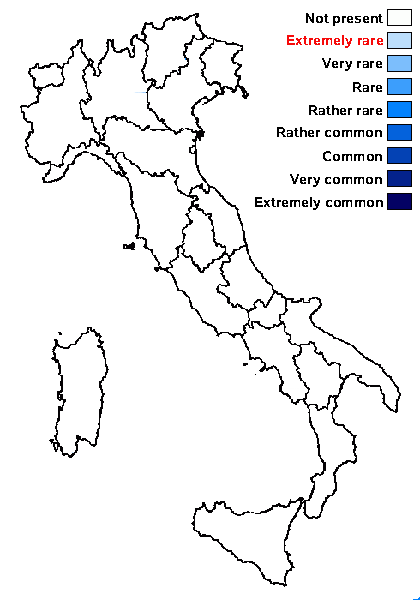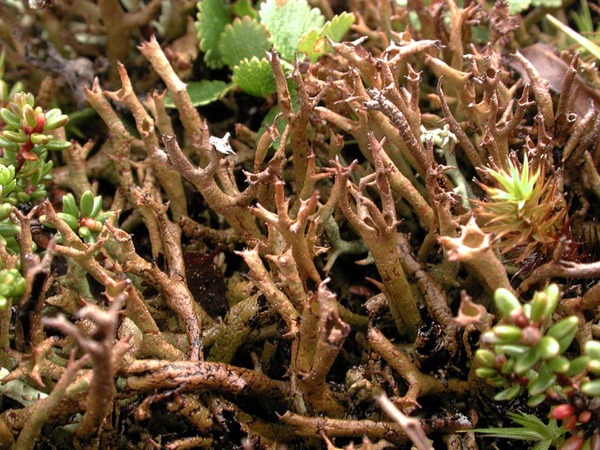Cladonia subfurcata (Nyl.) Arnold
in Rehm, Cladon. Exsicc.: no. 263, 1885. Basionym: Cladonia degenerans f. subfurcata Nyl. - in Norrlin, Not. Sällsk. Fauna Fl. Fennica Förh., 13: 320, 1874
Synonyms:
Distribution:
Description: Primary thallus squamulose, inconspicuous, soon evanescent. Podetia branched and forming tufts, hollow inside, erect, pale to dark brown, glossy, strongly melanotic in basal parts, 50-120 mm tall, 0.5-2.5 mm thick, the branching anisotomic polytomous with very short branchlets, the axils perforated, the tips subulate, acute; surface corticate, smooth, very rarely with a few squamules, often with some areoles at the base of podetia. Apothecia very rare, dark brown, terminal. Asci 8-spored, clavate, thickened at apex, with a K/I+ blue tholus and a K/I+ strongly blue outer gelatinous sheath, Cladonia-type. Ascospores 1-celled, hyaline, ellipsoid. Pycnidia mostly terminal, conical or cylindrical, with a reddish jelly. Conidia hyaline, curved. Photobiont chlorococcoid. Spot tests: K-, C-, KC-, P-, UV+ white. Chemistry: squamatic acid (major), and barbatic acid (minor).
Note: a mainly arctic-alpine to boreal-montane species growing on acidic, humus-rich soil, plant debris, mossy rocks or decaying wood, in open areas, apparently with a suboceanic distribution in Europe. Very rare in Southern Europe, with a few records from the Eastern Alps, outside Italian territory. To be looked for in the Italian Alps.
Growth form: Fruticose
Substrata: lignum, rocks, soil, terricolous mosses, and plant debris
Photobiont: green algae other than Trentepohlia
Reproductive strategy: mainly sexual
Most common in areas with a humid-warm climate (e.g. most of Tyrrenian Italy)

Predictive model
Growth form: Fruticose
Substrata: lignum, rocks, soil, terricolous mosses, and plant debris
Photobiont: green algae other than Trentepohlia
Reproductive strategy: mainly sexual
Most common in areas with a humid-warm climate (e.g. most of Tyrrenian Italy)

Predictive model
 INDEX FUNGORUM
INDEX FUNGORUM
 GBIF
GBIF


